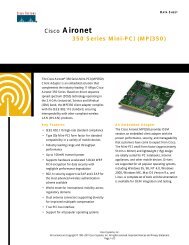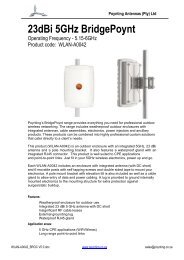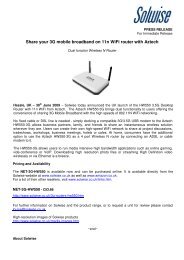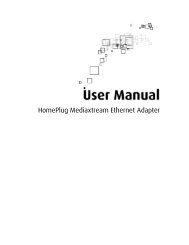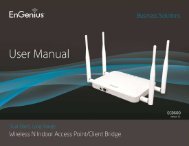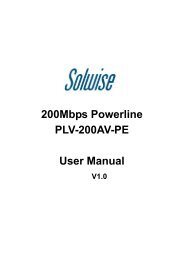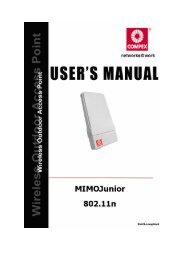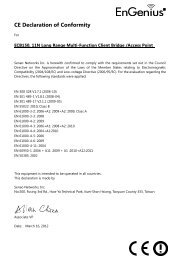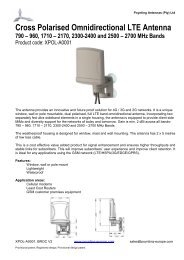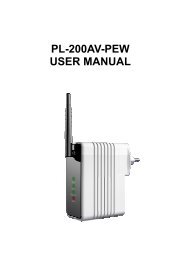You also want an ePaper? Increase the reach of your titles
YUMPU automatically turns print PDFs into web optimized ePapers that Google loves.
58<br />
6.2.4.3. WPA Personal (Wi-Fi Protected Access)<br />
Select the WPA-Personal from the drop-down list if your wireless network uses WPA encryption. WPA (Wi-Fi Protected Access)<br />
was designed to improve upon the security features of WEP (Wired Equivalent Privacy). The technology is designed to work with existing<br />
Wi-Fi products that have been enabled with WEP. WPA provides improved data encryption through the Temporal Integrity Protocol (TKIP),<br />
which scrambles the keys using a hashing algorithm and by adding an integrity checking feature which makes sure that keys haven’t been<br />
tampered with.<br />
• WPA Mode: Select the Auto WPA / WPA2 from the drop-down list.<br />
• Cipher Type: Select TKIP and AES as the cipher suite. The encryption algorithm used to secure the data communication. TKIP. Use<br />
TKIP only. TKIP (Temporal Key Integrity Protocol) provides per-packet key generation and is based on WEP. AES. Use AES only.<br />
AES (Advanced Encryption Standard) is a very secure block based encryption. Note that, if the bridge uses the AES option, the bridge<br />
can associate with the access point only if the access point is also set to use only AES. TKIP and AES. The bridge negotiates the<br />
cipher type with the access point, and uses AES when available.<br />
• Group Key Update Interval: Specify the number of seconds before the group key used for broadcast and multicast data is changed.<br />
• Pre-Shared Key: The key is entered as a pass-phrase of up to 63 alphanumeric characters in ASCII (American Standard Code for<br />
Information Interchange) format at both ends of the wireless connection. It cannot be shorter than eight characters, although for proper<br />
security it needs to be of ample length and should not be a commonly known phrase. This phrase is used to generate session keys<br />
that are unique for each wireless client.<br />
• Click on the Save Changes button to store these settings.<br />
58



